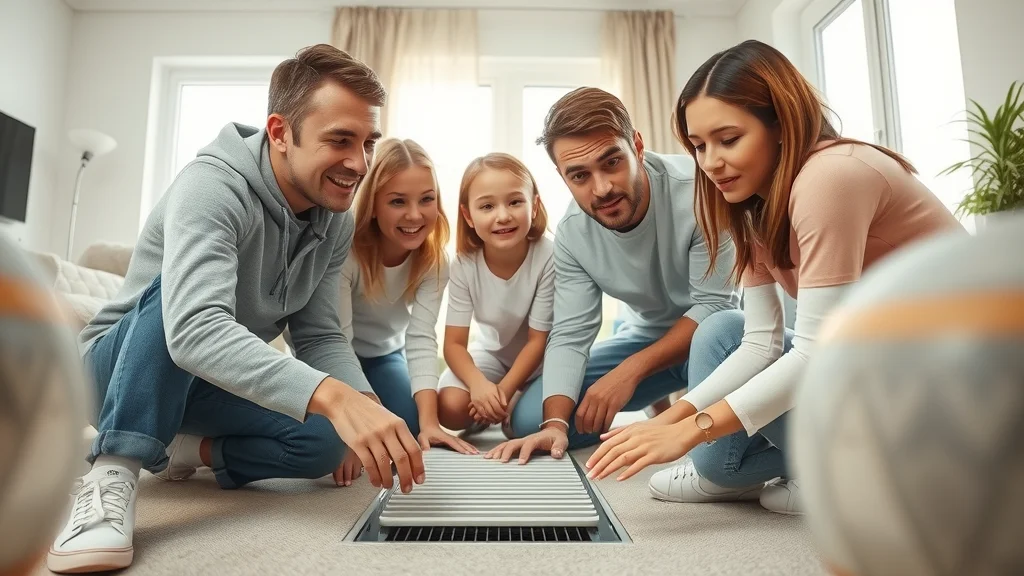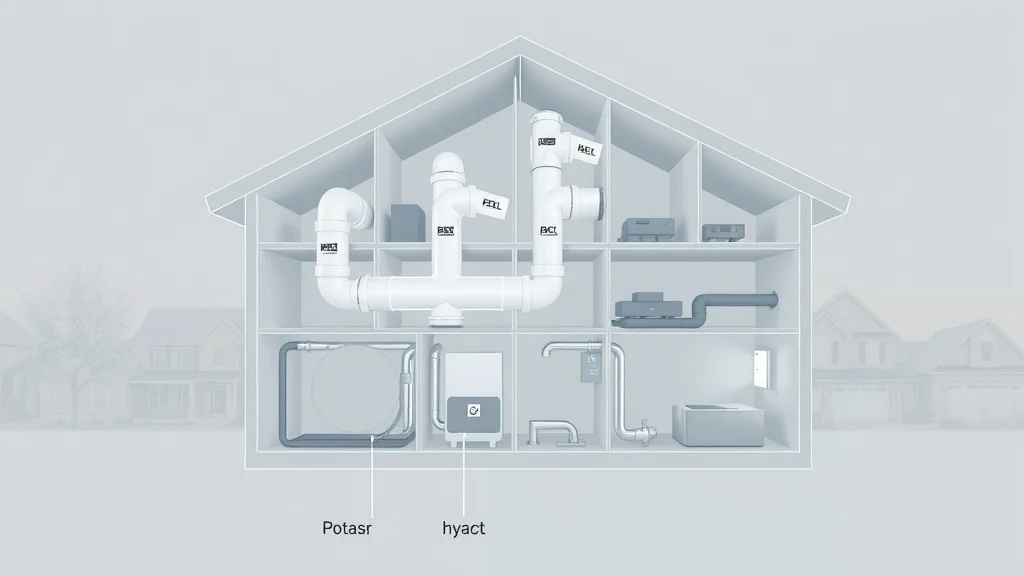Did you know that according to the EPA, indoor air can be two to five times more polluted than outdoor air? This staggering fact underscores how crucial home ventilation system cleaning is—not just for peace of mind but for your family’s health, HVAC efficiency, and lower utility bills. If the idea of cleaning your home’s air ducts, vents, and HVAC components feels overwhelming, you’re in the right place. This guide breaks down everything you need to know about home ventilation system cleaning, empowering you to breathe easier without unnecessary hassle.
Why Home Ventilation System Cleaning Matters: Essential Facts and Startling Statistics
Our homes are sanctuaries, yet most people are unaware that the air inside them often harbors more pollutants than the air outdoors. Poor indoor air quality, driven largely by dirty air ducts, clogged dryer vents, and neglected HVAC systems, puts everyone at risk. Studies show that airborne particulates, dust, and microbial growth within ventilation systems contribute to respiratory issues and allergies, especially in children and elderly family members. Regular home ventilation system cleaning keeps the air you breathe clean and safe—helping to prevent mold growth, dust accumulation, and system malfunctions.
Perhaps more alarming, the accumulation of debris in your home’s air ducts and dryer vent can significantly reduce the efficiency of your entire HVAC system. Dirty air ducts obstruct airflow, overwork your heating and cooling system, and can hike your energy bills by up to 20%. Prioritizing air duct cleaning not only boosts indoor air quality but also protects your budget and your home’s infrastructure.

“According to the EPA, indoor air can be two to five times more polluted than outdoor air, making home ventilation system cleaning an urgent priority for every household.”
What You’ll Learn in This Guide to Home Ventilation System Cleaning
- The health and safety benefits of regular home ventilation system cleaning
- Step-by-step methods for duct cleaning and air duct cleaning
- Cost, frequency, and DIY versus professional services
- Tips to improve indoor air quality
Understanding Home Ventilation System Cleaning: Definitions and Key Components
Home ventilation system cleaning goes beyond wiping vents—it’s a comprehensive process that targets every major component that circulates air throughout your home. This includes air ducts, the main trunk lines that carry air; return vents and supply vents; the HVAC system’s filters and coils; and the often-overlooked dryer vent. Loosely, “air duct cleaning” refers to the cleaning of all ducts and central HVAC parts, while “vent cleaning” may mean only the grilles or smaller pathways.
The difference between cleaning your air ducts and cleaning your entire ventilation system is significant. Air ducts are the channels through which air moves, while the HVAC system includes heating and central air units, blowers, and filters. The dryer vent, meanwhile, removes moisture from your clothes dryer and is a separate hazard point for home fires if clogged. Understanding these differences ensures that you schedule comprehensive duct cleaning services—keeping every aspect of your system fault-free and efficient.

- What comprises a home ventilation system
- Difference between air ducts, dryer vent, and HVAC system
- Role of duct cleaning and air duct cleaning
The Hidden Dangers of Neglecting Home Ventilation System Cleaning
Neglecting home ventilation system cleaning carries consequences that extend beyond just dusty corners or unpleasant odors. The quality of indoor air can dramatically deteriorate as dust, mold spores, pet dander, and chemical residues build up in your air ducts and vents. This not only aggravates allergies and asthma but can also cause persistent headaches and reduce cognitive well-being for everyone indoors. For families reliant on heating and cooling systems, dirty air ducts are a direct route to poor indoor air quality.
What’s more, the efficiency and longevity of your HVAC system are at stake. When air ducts are clogged with dirt and debris, the entire cooling and heating system is forced to work harder, wasting energy and risking mechanical failure. Air duct cleaning becomes not just a recommendation, but an essential maintenance strategy to prevent expensive repairs and safeguard your comfort. Improperly cleaned ventilation leads to higher energy costs, inconsistent temperature control, and even complete system breakdowns.
- Indoor air quality and associated health risks
- Impact of dirty air ducts on the HVAC system’s efficiency
“Clogged air ducts can reduce HVAC system efficiency by up to 20%, leading to higher energy bills and increased repair costs.”
While maintaining your home’s ventilation system is crucial for air quality and energy efficiency, it’s also important to consider the overall upkeep of your living space. For example, if you’re planning a home refresh, exploring professional painting services in your area can further enhance your indoor environment and complement your clean, healthy air.
How Often Should Home Ventilation System Cleaning Be Performed?
Expert Recommendations for Air Duct Cleaning Frequency
The question of how often your home should undergo air duct cleaning is one of the most common, and industry standards offer clear guidance. According to the National Air Duct Cleaners Association (NADCA), most homes benefit from a complete air duct cleaning every 3-5 years. However, this interval can shorten if you have pets, allergies, recent renovations, or live in an area with high pollen or dust levels. Regularly checking on your system and following advice from certified duct cleaners helps you stay ahead of indoor air quality problems.
While an annual inspection is wise, you might need more frequent cleaning if household members suffer from allergies, if indoor air smells musty, or if you observe visible dust buildup on vents. Dryer vent cleaning, a critical home safety measure, is recommended at least once every 12 months. Following industry-standard guidelines and consulting experienced air duct cleaners ensures your ventilation system operates efficiently and your family breathes the cleanest possible air.
- Industry-standard guidelines
- Advice from the National Air Duct Cleaners Association
Signs Your Home Needs Vent Cleaning: How to Detect Air Quality Issues

If you’re unsure whether you need duct cleaning services, look for telltale signs around your air ducts and vents. One of the most obvious indicators is visible dust buildup either on or around the vent covers. If you frequently spot dust particles floating in the air or find yourself dusting more often, your HVAC system could be circulating dirty air. Further, allergy symptoms like sneezing, coughing, or watery eyes that worsen indoors suggest indoor air quality is lagging due to contaminated air ducts.
Unusual odors—such as mustiness or a persistent burnt or stale smell—often signal that your air ducts harbor mold, mildew, or trapped debris. Poor airflow from vents, rising energy bills, and hot or cold spots in your home also point to vent cleaning issues. Addressing problems early with proper duct cleaning can restore your cooling system’s performance and dramatically improve indoor air quality for the entire family.
- Dust buildup and allergy symptoms
- Unusual odors and poor indoor air quality
Step-by-Step Guide to Home Ventilation System Cleaning
Preparing for Home Ventilation System Cleaning: Tools and Safety

Before tackling any home ventilation system cleaning, it’s critical to gather the right tools and prioritize safety. Safety goggles, gloves, dust masks, and a sturdy vacuum with a HEPA filter top the list. Specialized brushes for ductwork, wet/dry vacuums, screwdrivers, and duct cleaner sprays can help you access and scrub every nook and cranny. Always switch off your HVAC system at the main panel before you begin to avoid any accidents.
Position drop cloths under vents to catch dislodged debris, and ensure every cleaning session concludes with a visual inspection using a flashlight. Proper preparation not only ensures effective cleaning but also prevents harmful contaminants from recirculating in your indoor air. If you have respiratory concerns, consider using professional air duct cleaning services to avoid personal exposure to dust, mold spores, or chemical residues.
How to Clean Your Air Ducts: DIY Air Duct Cleaning Tips
- Safety precautions
- Duct cleaning methods and recommended air duct cleaners
- Common mistakes to avoid
Start your DIY air duct cleaning journey by removing the vent covers and gently vacuuming dust and debris from the exposed ducts. Use long-handled, soft-bristle brushes to dislodge stubborn dirt and push it towards the vacuum hose. For deeper stains or mold, EPA-approved duct cleaner products are essential—never use harsh chemicals that could contaminate your air supply. Take care not to puncture or damage ductwork with sharp tools, as this can lower system efficiency and even void warranties.
Always follow safety guidelines: wear protective equipment, ensure adequate ventilation in the cleaning area, and avoid inhaling airborne dust. Avoid forcing water or liquid cleaners into ducts, which may encourage mold growth. If you encounter excessive buildup, visible mold, or pests inside the air ducts, contact a certified air duct cleaning service promptly. Their advanced tools and knowledge will ensure a healthier, more effective result.
Professional Duct Cleaning Service vs. DIY: Which Is Right for Your Home Ventilation System Cleaning?

- Cleaning service provider qualifications
- Cost comparison and effectiveness
Choosing between professional duct cleaning services and the DIY route depends on your home’s needs and your comfort level. Certified HVAC technicians use high-powered vacuums, negative air pressure machines, and specialized treatments not available to most homeowners. They’re also trained to detect hidden issues such as mold, leaking ducts, or pest infestations that a layperson might miss. When selecting a cleaning service, check for credentials such as NADCA certification, positive reviews, and transparent pricing.
Cost-wise, DIY air duct cleaning can save you money upfront, but professional jobs often deliver deeper, longer-lasting results and peace of mind. The average cost for a complete professional duct cleaning ranges from $300 to $700, depending on home size and scope, while DIY may cost less if you already own basic tools. Weighing the effectiveness and safety benefits versus potential risks and time investment will help you make the right choice for your home ventilation system cleaning project.
| Aspect | DIY Air Duct Cleaning | Professional Service |
|---|---|---|
| Typical Cost | $50 – $150 (tools only) | $300 – $700 |
| Time Required | 3 – 6 hours (may be more for larger homes) | 2 – 4 hours |
| Effectiveness | Good (light to moderate buildup) | Excellent (deep cleaning, advanced tools) |
| Risk Level | Higher risk of incomplete cleaning or damage | Low (backed by guarantee/CERTs) |
| Recommended Frequency | When visible buildup or at least every 3-5 years | Every 3-5 years, or as needed |
Essential Maintenance Tips After Home Ventilation System Cleaning
- Scheduling regular duct cleaning service
- Tips for maintaining indoor air quality
- Using the right duct cleaner products

To keep your air ducts and HVAC system running at peak performance between major cleanings, establish a simple routine of maintenance. Replace your HVAC filters every 2-3 months—or more frequently if you have allergies or pets—to reduce the introduction of dust and allergens. Schedule a professional inspection annually; even if you perform DIY duct cleaning, expert eyes can catch developing issues before they escalate.
Keep vents clear of obstructions and regularly dust grilles and registers for optimal airflow. Invest in high-quality duct cleaner sprays and use natural air purifiers or house plants to improve indoor air quality. By staying proactive, you maximize your investment in duct cleaning service and ensure fresh, breathable air circulates throughout your home year-round.
People Also Ask About Home Ventilation System Cleaning
How much does it cost to have your ventilation system cleaned?
The cost for home ventilation system cleaning varies based on home size, the complexity of your ductwork, and your region. On average, professional air duct cleaning costs between $300 and $700. If you require additional services like dryer vent cleaning or antimicrobial treatments for mold, prices may be higher. Always request detailed estimates from reputable duct cleaning services before committing.
How to clean a ventilation system in a house?
To clean your home ventilation system, switch off the HVAC system, remove vent covers, and use a HEPA vacuum and specialized brushes to dislodge dust and debris. Wipe all accessible duct surfaces and registers. For deeper cleaning or if mold or pests are present in your air ducts, hire a certified air duct cleaning service. Regular filter replacement and keeping vents unobstructed also support system cleanliness.
Is it worth it to have air ducts cleaned?
Absolutely. Air duct cleaning removes dust, allergens, mold spores, and debris from your HVAC system. Clean air ducts improve indoor air quality, enhance system efficiency, lower energy bills, and extend the life of your heating and cooling appliances. This can lead to better respiratory health and more consistent indoor comfort—making professional cleaning a valuable investment.
How often should home air vents be cleaned?
Most experts, including the National Air Duct Cleaners Association, recommend scheduling air duct cleaning every 3 to 5 years. Air vents and grilles should be checked and dusted monthly, and you should replace filters at least once every two to three months. Increase cleaning frequency if you have pets, allergies, or after renovations, for the best indoor air quality.
Key Takeaways: Stress-Free Home Ventilation System Cleaning
- Regular home ventilation system cleaning enhances indoor air quality
- Both DIY and professional air duct cleaning have specific benefits
- Staying on schedule prevents costly HVAC system issues
FAQs on Home Ventilation System Cleaning
- What is the difference between air duct cleaning and vent cleaning?
Air duct cleaning refers to removing debris from all the ductwork, while vent cleaning focuses only on registers and grilles. For best results, both should be addressed. - Does duct cleaner eliminate mold?
Many EPA-approved duct cleaner products can treat minor mold issues, but extensive contamination should be managed by professional cleaners using specialized tools. - What should a duct cleaning service include?
A full duct cleaning service typically involves cleaning supply and return ducts, registers, grilles, HVAC units, and changing filters. Some may offer antimicrobial treatments for mold. - Are there industry certifications for air duct cleaners?
Yes, look for NADCA-certified (National Air Duct Cleaners Association) professionals, which indicates they adhere to industry standards and best practices.
Ready for Cleaner Air? Schedule Your Home Ventilation System Cleaning Consultation
Don’t wait for air quality problems to catch you off guard. Proactive home ventilation system cleaning pays dividends in comfort, health, and savings. Whether you tackle vents as a savvy DIYer or rely on a trusted professional duct cleaning service, make a habit of protecting your family’s lungs and your home’s heating and cooling system. Schedule your consultation today and breathe easier tomorrow!
Now that you’re equipped with the essentials for stress-free home ventilation system cleaning, consider how a holistic approach to home care can further elevate your living environment. From fresh air to freshly painted walls, every detail contributes to a healthier, more inviting space. If you’re inspired to take your home’s comfort and appearance to the next level, discover how working with local painting professionals can transform your interiors and complement your clean air efforts. Explore new possibilities and create a home that truly supports your well-being from every angle.

